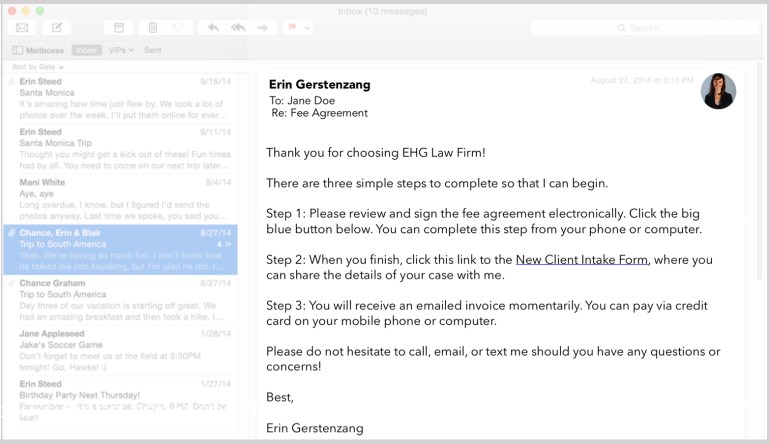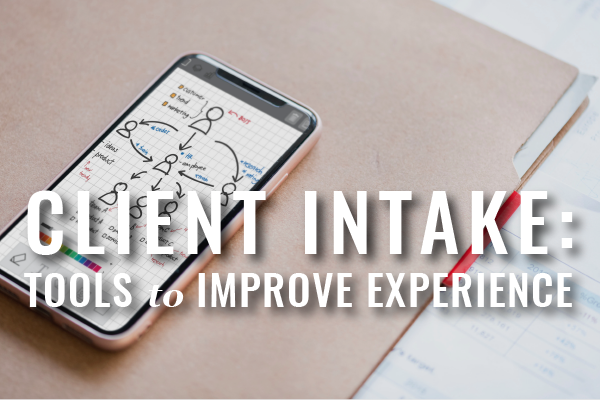It’s critical for business development to focus your clients’ experience as they work with your law practice — and and it starts with intake. Find out what tools you need for the best process for your clients — and you.
Our friends at Attorney at Work recently sourced expert tips on how lawyers can improve client intake. Critical for client service and more, an effective intake process helps you avoid taking cases you will not want to handle. But attorneys face option overload when attempting to plan improvements, as Joan Feldman points out, “[a]s legal tech companies target the nose-to-tail client journey, we’re seeing an influx of tools and bots that tackle lead generation, intake, and onboarding.”
I expand on using the right tools to enhance the client’s “user experience” with my contribution to Attorney at Work’s post. We’ve published a few essentials on designing an effective intake process here on our Mass LOMAP Blog that you’ll want to start with if you haven’t already:
- Intake and Fee Agreements Best Practices
- Tips to Improve Client Intake and Experience in Your Law Practice
- Ethical Client Intake: Procedures for Compliance [Webinar]
Effective intake must balance both the client experience and firm efficiency. Start by assessing your potential client. Step into their shoes — what would a simple and convenient intake process look like? Could it be accomplished directly from their mobile phone via a few simple prompts? Or, does your potential client prefer to speak to a live person? Maybe it’s a combination of the two. Your firm’s intake process design and development should center on those answers, focusing on a better “user-experience design,” as discussed by Margaret Hagan in this Typeform blog post.
Typeform is one basic product that can help simplify your intake and enhance your client user experience. It is only one of many available tools. To complete your intake process, you’ll want to be sure that Typeform or whatever intake form the potential client completes is seamlessly input into your case management system. Taking this a step beyond the initial intake, you can weave together intake and engagement by using technology such as Zapier that connects apps and automates workflows.
Here’s an example of a process demonstrated by attorney Erin Gerstenzang last year at ABA TECHSHOW — using HelloSign for electronic fee agreement signatures, Typeform for client intake and Square for electronic payment.

You can find more on the client intake tips offered by the other experts in the full post on Attorney at Work. Following Jim Calloway’s advice to focus on client satisfaction, Sheila Blackford offers the perspective you need to stay ethical as you make client intake improvements a priority. Among further points on automation, Natalie Kelly highlights how you can leverage your practice management program!




